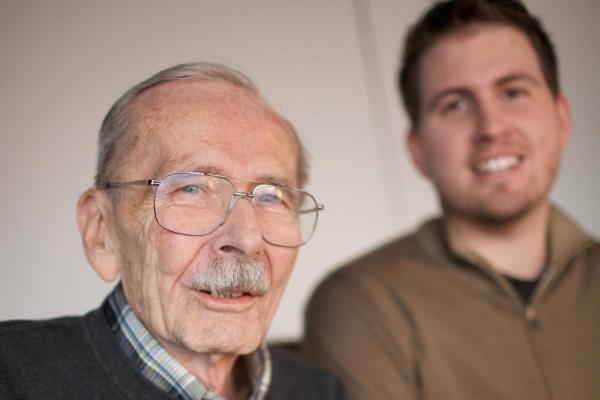While staying home is often the best way for older adults to protect themselves from contracting or spreading COVID-19, certain areas of the house can pose other health risks for older adults. For example, frequented areas like the bathroom and bedroom can contain hazards that put an older adult at high risk of a fall.
According to Canada’s Public Health Agency, 20-30% of older adults fall once or more each year – causing 85% of seniors' injury-related hospitalizations and 95% of all hip fractures. While the instance of falls can increase with age, many slips or trips can be prevented with a watchful eye, inexpensive home modifications and a few practical lifestyle adjustments.
As time goes on, the same place where older adults have created a lifetime of memories naturally becomes more challenging to navigate. The high risk of falls in the home shouldn’t scare us – but rather, empower us to take the right preventative measures to safely remain independent aging in place for years to come.
Aging in Place Modifications to Safeguard a Home:
- Spruce up the bathroom. Slick tile floors and tubs can pose high risk of falls and other accidents. Minimize potential slips in the bathroom by installing grab bars near the shower, tub and toilet. To make bathing easier, consider converting a showerhead to a hand-held version or with a trickle or pause showerhead, or adding a rubber mat or adhesive non-stick decals to the bottom of a tub.
- Clean and rearrange. Clutter can make it difficult to get around and locate necessities. Don’t just clean around piles—eliminate them. Then, organize the house so frequently used items are at waist level, minimizing the need to bend or climb. Consider removing or securing throw rugs. Arrange furniture to make rooms easy to navigate and allow enough space to walk around furniture.
- Rethink stairs. A trip up a staircase can be risky for many aging adults. Proper handrails are a must where stairs are steep. If stairs become a dumping ground for items such as shoes, dedicate a different space in the house to store loose items. When climbing upstairs begins to feel arduous, consider installing a stair lift or moving a bedroom downstairs to cut down on the number of, and potential for, trips.
- Adjust lighting. Inadequate lighting is a safety hazard and high fixtures often pose a problem for older adults who have difficulty changing out burned bulbs. Make sure the home and stairways are well lit and apply high-contrast colored tape to top and bottom of stairs and thresholds. Use a night light and/or leave a light on in the bathroom to reduce the risk of falls in the dark.
- Consider adding smart features. A fall can be startling and upsetting, even if it happens in the home. In the event a fall does occur, devices like voice-controlled speakers, wrist detection services or medical alert bracelets can alert family members or connect seniors to emergency services. This technology not only adds an extra layer of safety to the home, it can also help older adults feel more at ease.
Home should be a safe and comfortable place to spend the golden years. Just like it’s necessary to block ours schedule for a telehealth appointment or another important commitment, devote time to discussing and implementing changes in the home to reduce risks. Whether these simple fixes can be done in one weekend or over several weeks, consider it all time well spent to safeguard health and safety for years to come.
For other aging in place tips for the home and to learn more, visit www.HomeYourOwnWay.ca. Or, for additional resources on fall prevention, visit www.fallpreventionmonth.ca.



